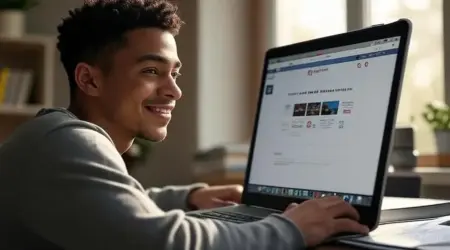

Temp Mail vs. Permanent Email: What’s the Difference?
Most people are familiar with traditional email services like Gmail, Yahoo, or Outlook—but temporary email services (temp mail) are becoming increasingly popular as a smart privacy solution. But is really any difference between temp mail and permanent emails?
Let’s see some differences between temporary mail and permanent email to help you decide which one emails your needs.
1. Definition and Purpose
Temp Mail
Temporary email (also called disposable mail) is a short-lived, anonymous email address created instantly without registration. It’s designed for one-time or short-term use, such as signing up for a website or downloading a file.
Permanent Email
A permanent email is your long-term, personal or professional address that you check regularly. It requires registration, usually stores your data indefinitely, and is used for important communication, banking, work, and more.
2. Privacy and Anonymity
Temp Mail
Offers high anonymity—no name, phone number, or password required.
Great for avoiding tracking, data collection, and unwanted surveillance.
Emails and inboxes are automatically deleted after a set time.
Permanent Email
Often linked to your personal identity and phone number.
Tracks usage history and behavior (especially with services like Google).
May store your data permanently unless you delete it manually.
3. Security and Data Exposure
Temp Mail
Limits long-term exposure since addresses expire.
Helps protect you from phishing and spam attacks tied to email lists.
No sensitive information should be sent via temp mail (no encryption or password protection).
Permanent Email
Offers two-factor authentication (2FA) and recovery options.
Can be used safely for confidential or sensitive communication.
Higher risk if reused across multiple platforms and exposed in a data breach.
4. Use Cases When to Use Temp Mail:
Signing up for free trials or one-time offers
Downloading eBooks or whitepapers
Entering contests or giveaways
Testing apps or websites
Avoiding spam from newsletters or promotions
When to Use Permanent Email:
Personal and professional communication
Online banking and shopping
Social media accounts
Government and legal communications
File storage and cloud services
5. Longevity and Access Temp Mail
Emails are temporary (from 10 minutes to a few hours or days).
No login or recovery if you lose access.
Once it expires, all messages are deleted.
Permanent Email
Long-term storage of messages and attachments.
Recoverable through password reset or account recovery.
Allows organizing messages, folders, and contacts over years.
Final Verdict
Temp mail and permanent method of sending E-mail have different uses in today's online world. Temporary E-mail, just as a privacy tool—good for the immediate and controllable environment. In contrast, permanent electronic mail is your primary information center, essential to daily needs
By knowing how to use each type appropriately, your inbox will be more secure, your identity less likely to be stolen and your internet presence more under control..










